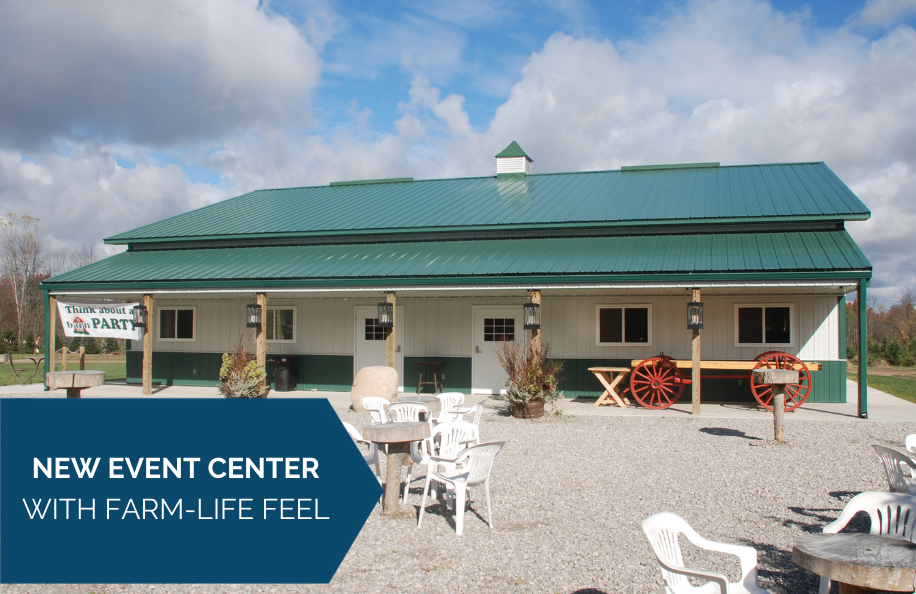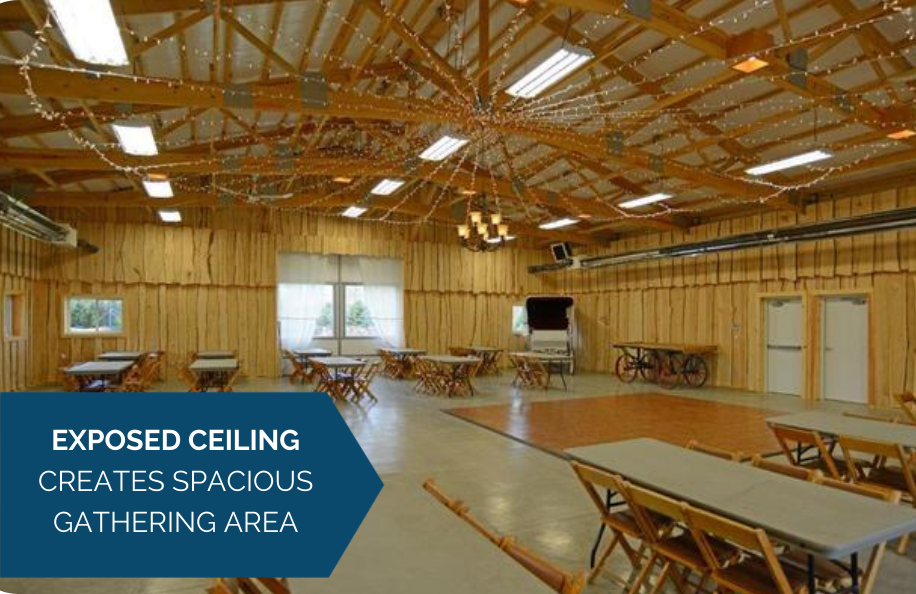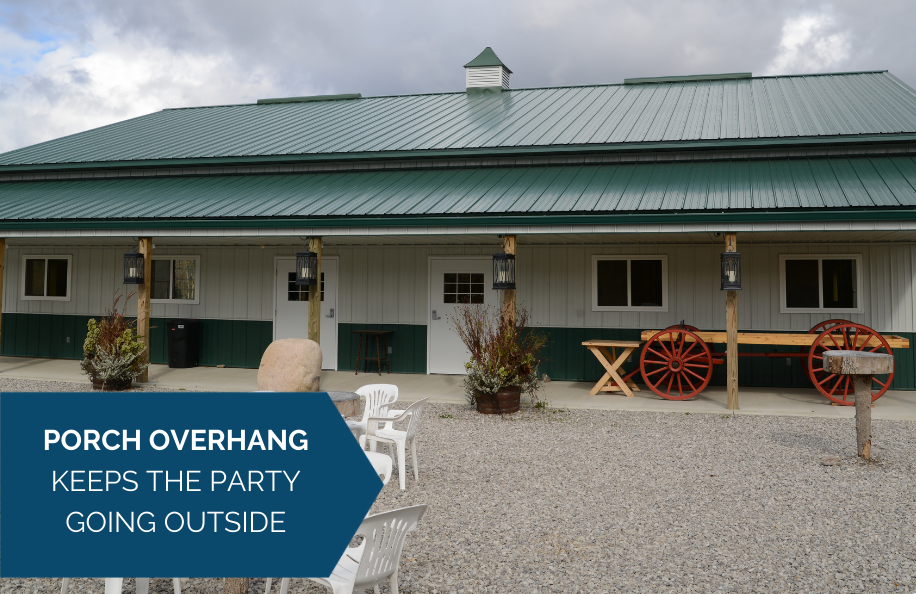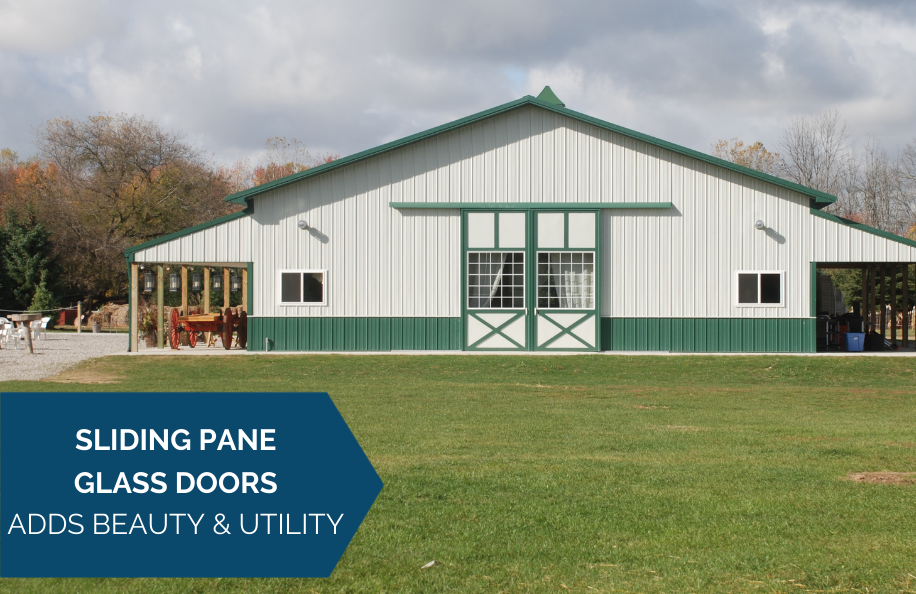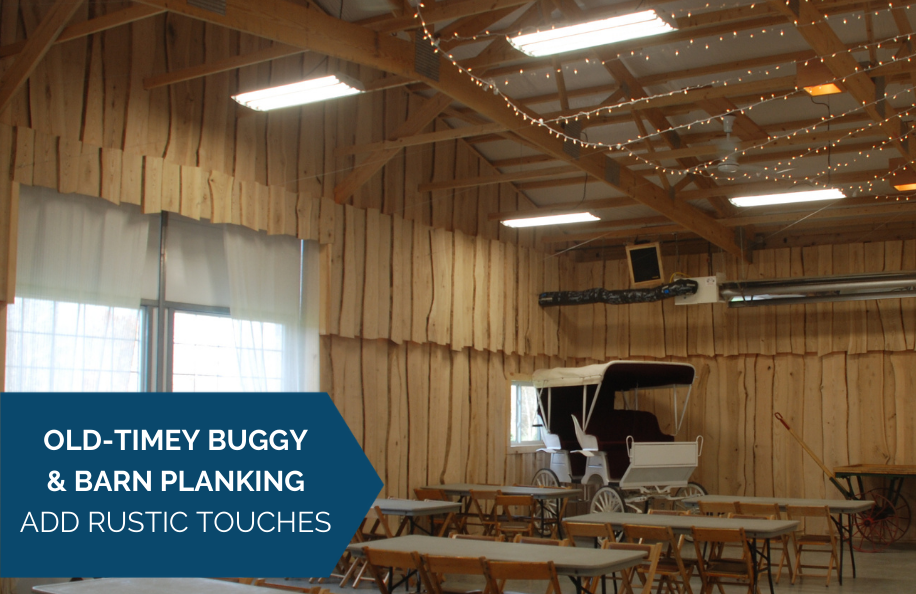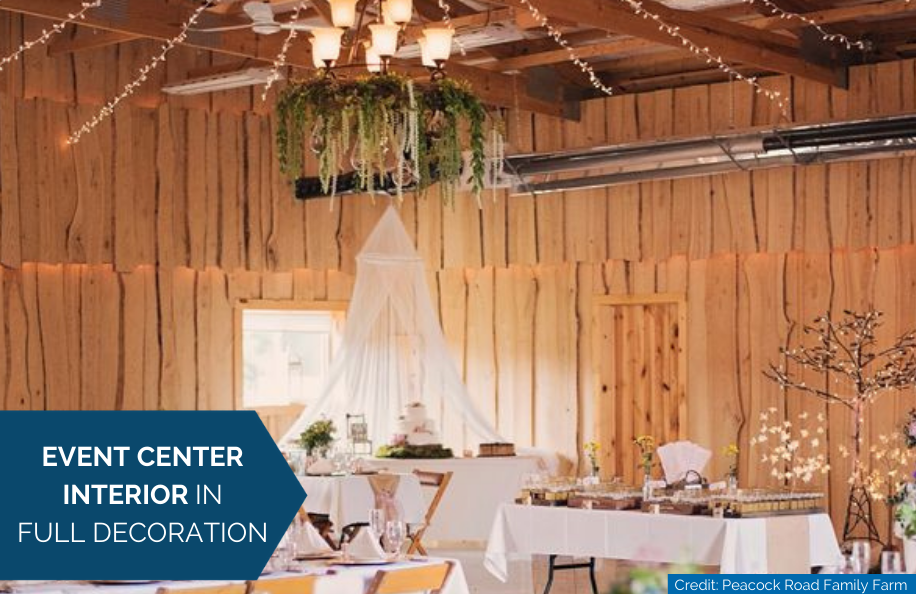Building Type:
CommercialSituated outside of Lansing, Michigan, the Peacock Road Family Farm exemplifies how rural charm can be transformed into a thriving event facility—with help from a horse barn-style post-frame building.
What the owners wanted:
An event space for an increasingly popular spot
Owners Ed and Diane Carpenter had already established a successful Christmas tree farm. But they had so many visitors from the nearby suburbs that it seemed like more could be done with their property.
So, they gradually added features and eventually restored an old barn, turning Peacock Road Family Farm into a year-round attraction.
Yet with each new addition to the property, more new opportunities emerged. That became especially apparent as more and more visitors inquired about using the farm for weddings and other events.
The Carpenters turned to Keith Pinkelman of Lynnman Construction for help. “They realized they had a need for an event facility,” says Pinkelman. “Something that could hold weddings and Christmas parties for companies.”
What was special about the project:
A clear choice emerged between refurbishing or building new
Sometimes the best-laid plans are meant to be changed. The Carpenters’ original idea was to rebuild an old farmhouse.
But Pinkelman says their aesthetic goals for that building would have run into serious challenges when it came to building code requirements. “We decided to take it in the opposite direction,” he says.
What emerged was a vision for a completely new facility, a post-frame building that resembled a horse barn and included sliding pane glass doors, porches with overhangs on both sides, and other features that created a “nice modern barn look,” says Pinkelman.
What was tricky:
Balancing the project vision with building code realities
Lynnman Construction has built hundreds of agricultural, commercial, and suburban post-frame buildings. From that experience, Pinkelman knew there would still be challenges in adhering to building and zoning codes, even with the smart choice of a post-frame building.
Careful engineering would be needed to prevent additional costs. For example, if the facility exceeded a certain capacity, it would trigger the requirement of a fire sprinkler system.
More generally, the design of the building required finding the sweet spot between the Carpenters’ wish list and the permitting requirements for a modern-day commercial building—even in rural Michigan.
In the end, Lynnman Construction managed to balance the permitting requirements with the Carpenters’ vision. “This is all about getting people to experience the lifestyle of living on the farm,” he says.
Who helped build it:
A trusted partner who knows a smart trend when they see one
Lynnman Construction is a Wick Buildings partner. They poured the concrete, constructed the building, and handled the electrical wiring and installation of doors and windows. Then the Carpenters, or should we say the Carpenters’ carpenters, took it from there, adding elements such as barn planking on the interior walls to create a rustic farm aesthetic.
Is the Peacock Road Tree Farm part of an emerging trend? Pinkelman says absolutely. “Everyone gets tired of going to the banquet hall. They want to get out of town and experience something unique.”
Why Wick Buildings was the right choice:
Post-frame’s clear advantages combined with crucial engineering expertise
The Peacock Road Family Farm project demonstrates the practical and aesthetic advantages that a Wick post-frame building has.
More specifically, a Wick post-frame building holds a distinct edge over steel-frame construction, another option for this type of building. Lynnman Construction’s Pinkelman points out four key examples of this:
1. Appearance. Having a post-frame building made it much easier to add the kind of features and aesthetic touches the Carpenters wanted, like the porches and the planked interior finishing, for example.
2. Efficiency. Steel is cooler than wood in the winter, and hotter in the summer. A post-frame building is a much more energy-efficient year-round facility.
3. Ventilation. A post-frame building allows for more natural ventilation.
4. Size. Event centers call for wide open spaces. A post-frame building made it possible to maximize square footage use with a spacious, unobstructed interior.
Pinkleman notes that he doesn’t have allegiance to either the steel or the post-frame approach. “It’s all based on what you’re trying to accomplish and how it lays out,” he said.
For the Carpenters, it was critical that they ultimately have a sizable, aesthetically-pleasing space that didn’t lead to more costly permit requirements. A Wick post-frame building—along with the Wick team of engineers and contractors—turned out to be the answer.
Interested in a project like this? Find a builder in your area!

